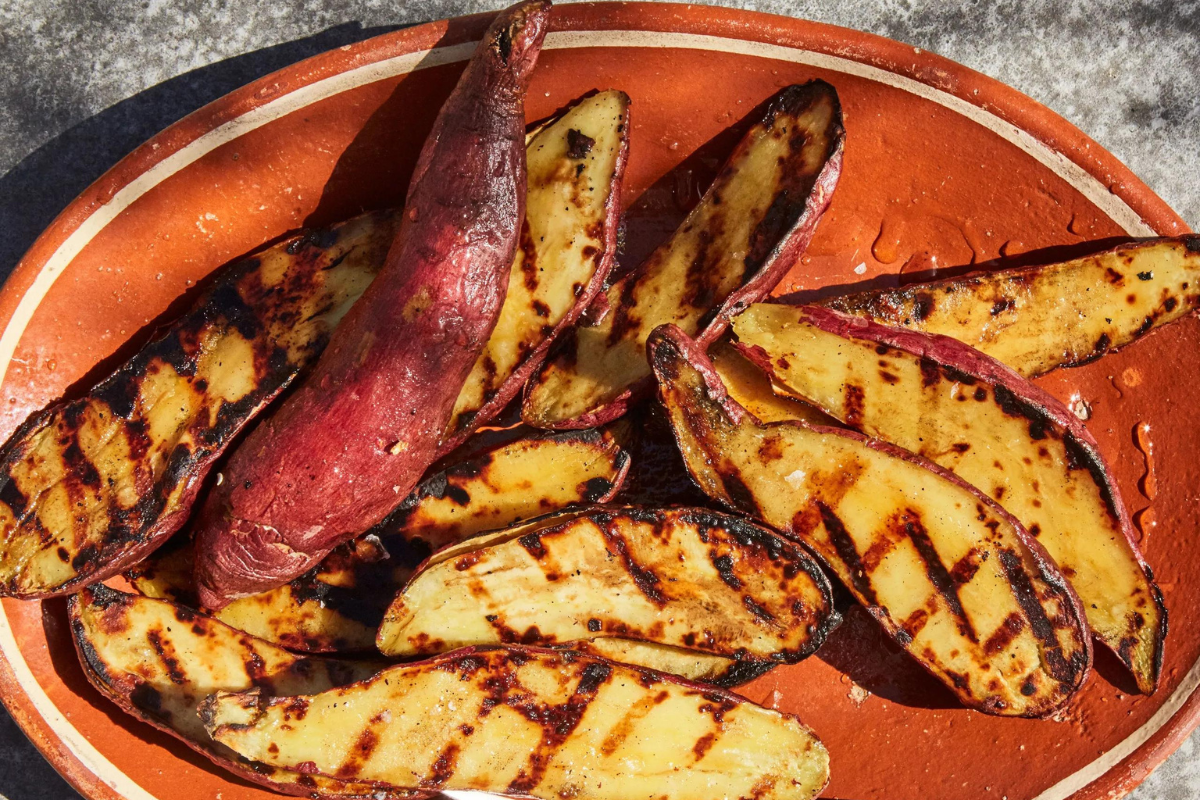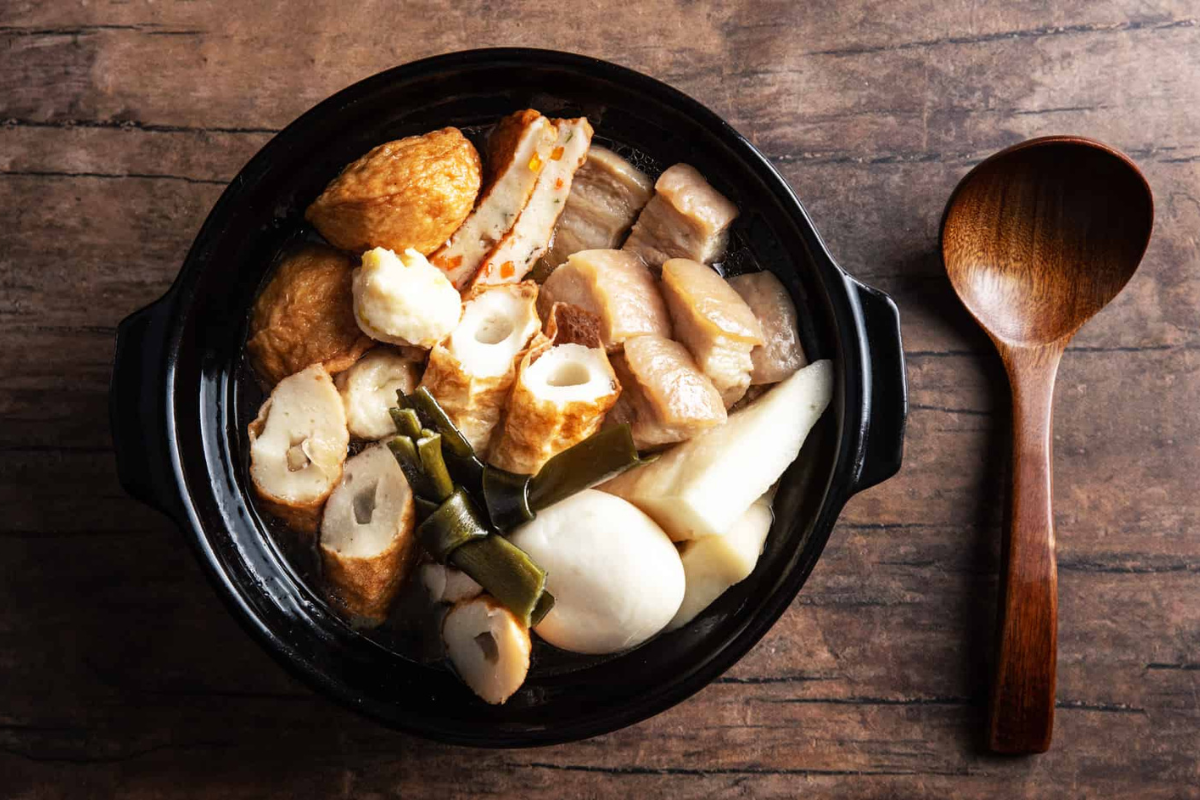Japanese food is well known for its cleanliness and freshness. It is a tasteful fusion of delicate culinary flavors with a hint of seasonality and ornate, visually arresting ornamental art. Due to this cold atmosphere and the variety and richness of foods available, fall is said to be the best season for savoring. Discover the characteristic autumnal delicacies of Japanese cuisine by following Wanderlust Tips!
Warm your body in the autumn weather with Oden hot pot
Convenience shops will fill with the aroma of dashi soup, simmering in a pot that is familiar as night falls. Oden is a unique kind of hot pot in which the ingredients are always added to a pot of light broth containing dashi and soy sauce. The pot is continuously cooked for hours on the stove. This meal is a winter favorite since it’s simple to make and provides warmth to the body. Potatoes, yams, fish cakes, boiled eggs, and white radish are typical components. Oden’s dipping seasoning is mustard.
This Oden meal is made by the locals by simmering dried tuna, Katsuobushi, and seaweed in broth and adding any dishes they want like boiled eggs, daikon, konjac, and fish cakes right after. For individuals who enjoy drinking sake, this meal is a favorite and holds great significance for the Japanese people.
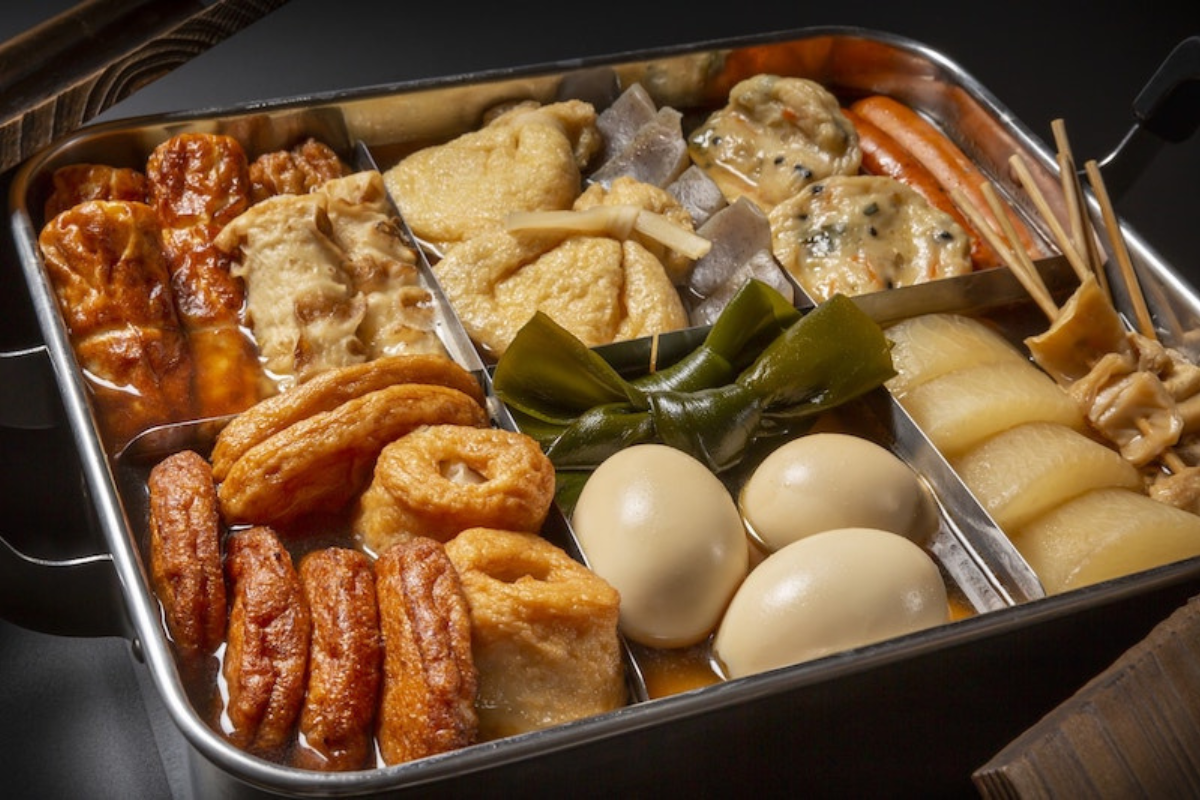
Photo: Work In Japan
Enjoy the sweet taste of shinmai
Shinmai, a variety of rice grown during Japan’s new rice season, is best enjoyed in the autumn as the rice harvest season is coming. Shinmai is a supper that is appropriate for the chilly nighttime weather since it is softer and wetter than the rice from the previous year. It is best consumed between September and December, by which time the rice loses its freshness and distinct scent.
Shinmai can only be consumed if the grains are milled into rice, packed, and sold within the year of harvest, but it isn’t available for purchase until December. The sweetness of shinmai may be enjoyed on its own but it also tastes well with autumn food. A few ginkgo nuts, chestnuts, or pine mushrooms will provide a delicate, toasty, and delightful flavor to the dish.
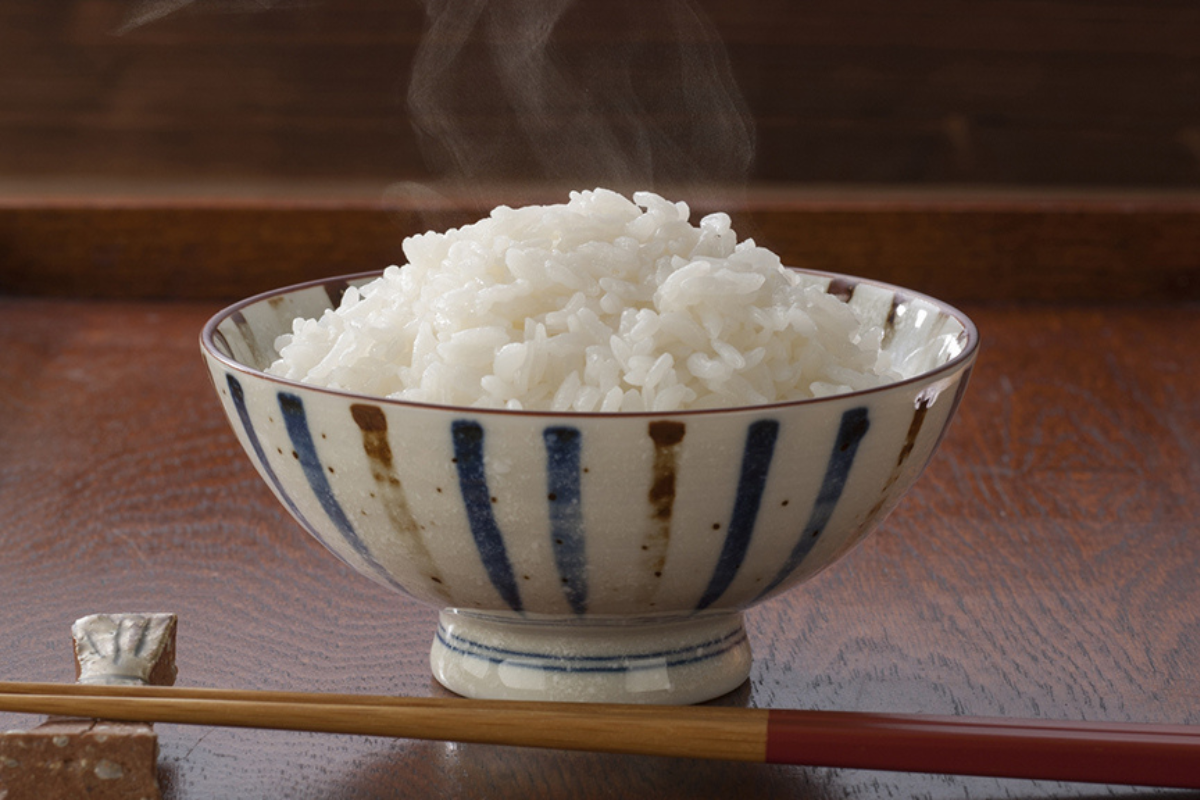
Photo: Living In Japan
Savoring the distinct Japanese autumn with ginkgo seeds
Ginkgo seeds are harvested as the leaves on the tree turn golden, and they have traditionally been associated with autumn. They are frequently offered in izakayas as a side dish alongside alcoholic beverages. The somewhat bitter flavor of ginkgo seeds makes them popular to consume with a little salt. They taste sweet and become golden when cooked, pairing nicely with stir-fried rice or just skewers.
The only drawback is that they smell terrible when they ripen, but it’s not too big of a deal if you’re not the one collecting them!
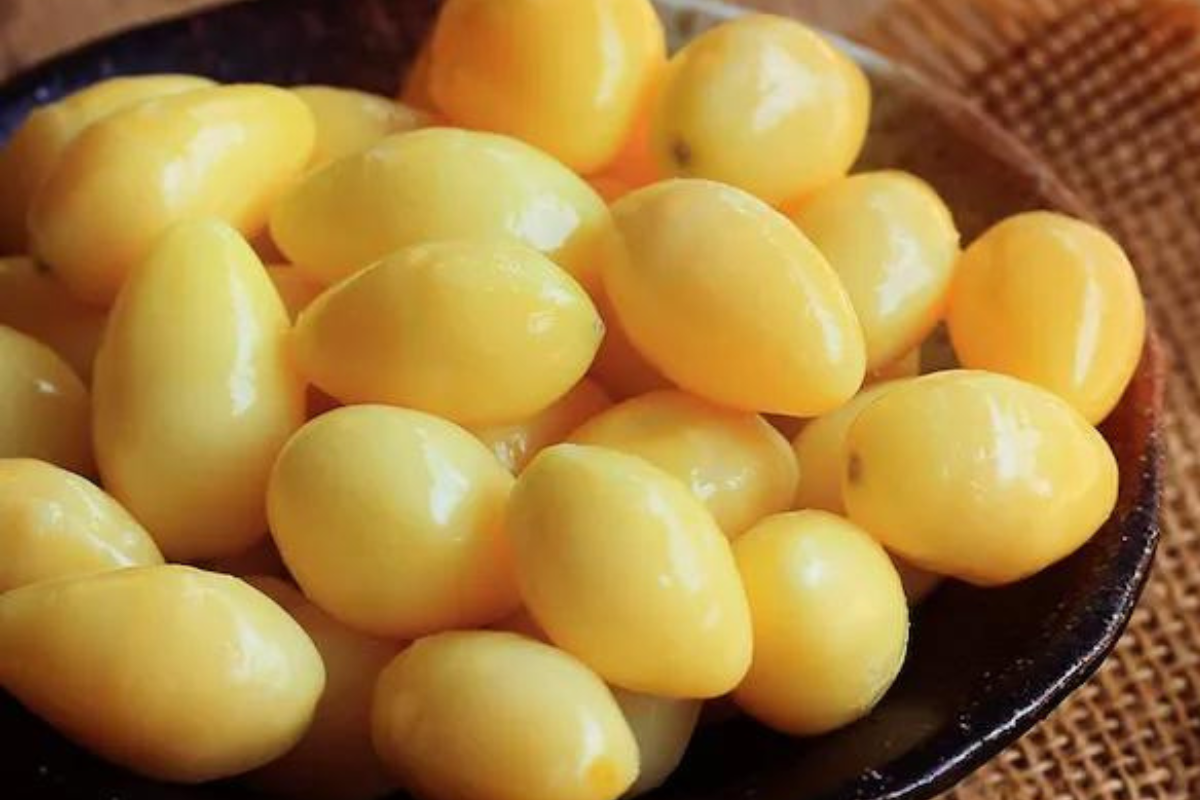
Welcome autumn with the flavors of youth in Japanese wines
Two of the greatest wines you have to sample are hiyaoroshi and akiagari, which are brewed in the winter, fermented, and completed in the spring and summer. Although the wine usually gets done in the autumn, brewers frequently wait longer to get the ideal flavor. Nevertheless, depending on demand, certain varieties will also be offered early.
While autumn has always been associated with wine, activities, and tastings no longer happen at specific times. Akiagari refers to the autumn harvest’s freshest wine batch. Although akiagari is fermented twice, in late summer, both kinds ripen according to the same timetable and are only offered in the autumn. On the other hand, Hiyaoroshi are unfermented wines that go through two or three fermentations, according to the brewer’s preference. They are supposed to be highly vivid and have the flavor of youth, making them worthy to try.
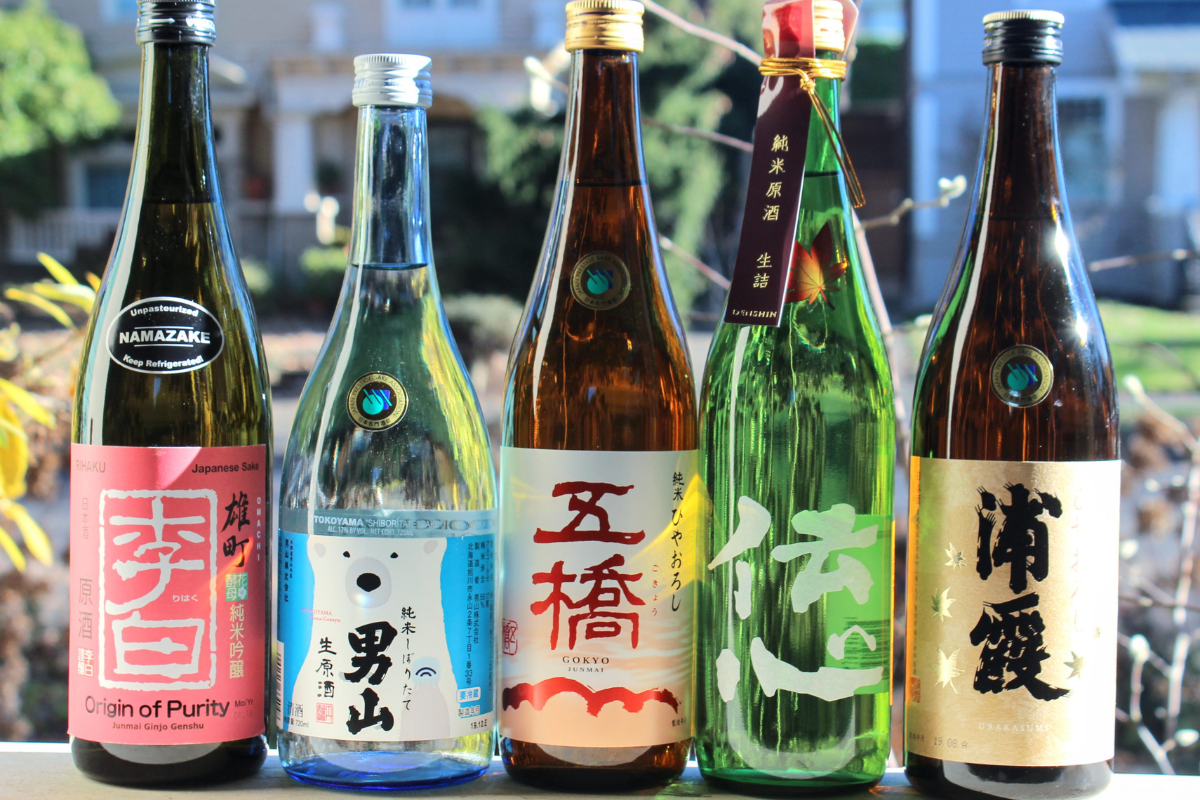
Enjoy Japanese autumn to the fullest with roasted sweet potatoes
In Japan, roasted sweet potatoes are a common fall snack. This rustic cuisine is often offered at festivals or on the streets during the changing seasons. There are a variety of flavors available to visitors, including red, yellow, and purple sweet potatoes. In Japan, autumn is a treat worth experiencing hot, delicious grilled cuisine under the chilly weather.
The sweet potato collected in the autumn is considered the best, although the kind cultivated in Satsuma province is the most well-known. When visiting Japan, you may notice street carts selling yakiimo, which are aromatic fried sweet potatoes. After being grilled to medium-rare, the potatoes are placed in a paper bag and cracked until they turn golden yellow and steam. This recipe is perfect for the chilly autumnal season.
